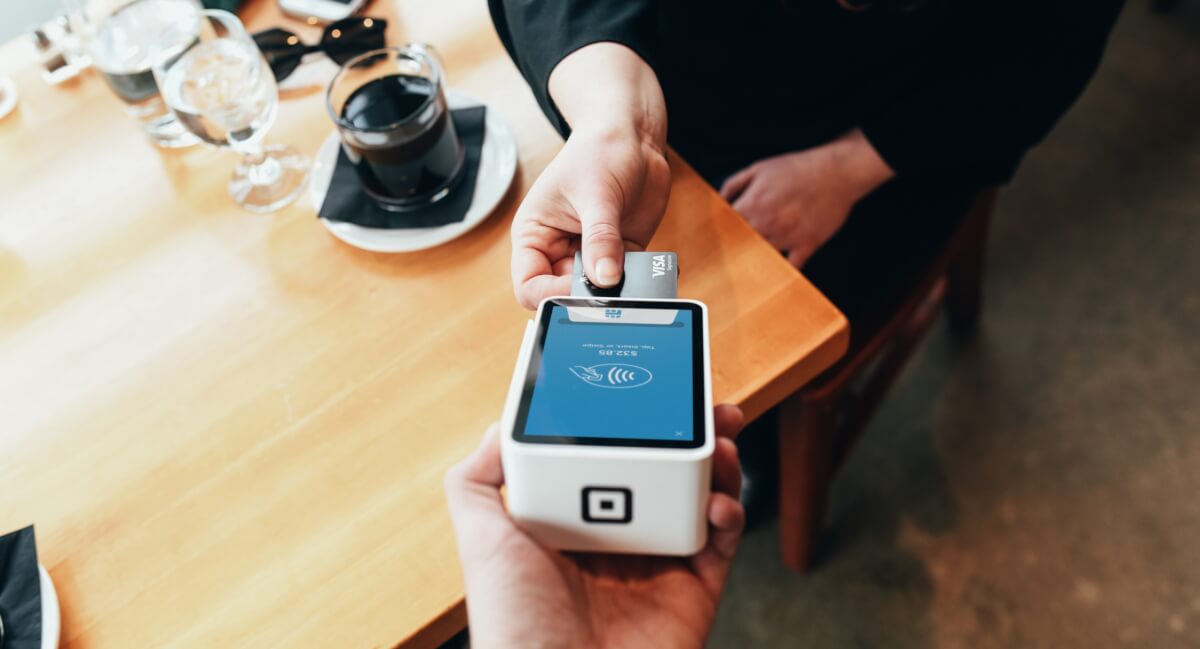Commbank complimentary credit card travel insurance. How does it work?
Explore our guide on the Commbank credit card travel insurance, detailing coverage, benefits, elligibility and essential tips for your next trip.

If you’re travelling abroad, you’ll need to work out how to pay for yourself while you’re there. But you might not be too keen on the idea of wandering around a foreign country with a wallet packed full of cash. So it’s only natural to want to know about card payments.
The good news is this: if you have a Visa or Mastercard, you’ll probably be able to use your normal Australian debit card in a majority of places around the world. They really are international networks, with amazing reach.
You’ve probably already guessed the bad news: it can cost you. You could end up having to pay several different fees, even on individual transactions. But even so, the cost of using a card abroad often works out at less than buying foreign currency at a bad exchange rate.
There’s something else worth considering too: specialist travel money cards. These are usually pre-paid cards that look and work just like debit cards, but can hold money in several different currencies. There will still be fees to pay, including potentially for converting money between currencies – but if used correctly, they can work out as cheaper still.
This article will give you an overview of a few of the best travel cards, whether they’re standard bank debit cards with particularly useful features for travel, or cards made especially for travel. Take a look through, and see what sounds best for you.
Whichever card you end up using during your trip, here are a few key points to bear in mind. Whether you’re using your card in Europe, the US or elsewhere, they’re always worth remembering.
ING is Dutch in origin, which may explain its fondness for the colour orange. It’s been active in Australia since 1999 and has become a major player in the Australian market.
Its standard accounts are called “Orange Everyday” accounts, and the Visa card that comes with these accounts is designed to appeal to travellers: it offers no international transaction fees, and even refunds you if you have to pay a fee at a foreign ATM. Here’s a look at some of the key questions you’ll have if you’re planning a trip.¹
| Question | ING Orange Everyday Visa debit card |
|---|---|
| What sort of card is it? | Standard Visa debit card |
| Does it come with a bank account? | Yes: the Orange Everyday account |
| Can you hold money in multiple currencies? | No: just Australian dollars |
| What features make it good for international travellers? | You can get various international fees rebated – see below |
| What are the ATM fees?² |
|
| What are the international transaction fees?² |
|
| What exchange rate do you get?³ | The rate set by Visa |
| Is there a monthly maintenance fee?² | No |
| What other fees and limits are there?² | You can only claim for the rebates if you do the following during the previous calendar month:
|
If you’re after the best debit card for overseas travel and also need an everyday bank account, the ING Orange Everyday account and debit card may be tempting. That said, if you’re not going to be using the card pretty regularly, with at least $1,000 going into it the month before your trip, then its key benefits won’t apply.
Citibank is another originally foreign bank – American this time – that has made a home for itself in Australia. But it’s keen to make travelling easy for its customers, especially those who opt for their Citibank Plus account. This is an everyday, “transaction” account (rather than a savings account) that has a few extra features designed for travellers.
| Question | Citibank Plus Mastercard debit card |
|---|---|
| What sort of card is it? | Standard Mastercard debit card |
| Does it come with a bank account? | Yes: the Citibank Plus account |
| Can you hold money in multiple currencies? | No: just Australian dollars |
| What features make it good for international travellers?⁴,⁵ | It is a “fee-free” account, charging no fees to send and receive money around the world, and no fees for overseas ATM transactions. (That doesn’t necessarily mean no other parties will charge fees) |
| What are the ATM fees?⁵ | No fees for overseas ATM transactions |
| What are the international transaction fees?⁵ | No international transaction fees |
| What exchange rate do you get? | The rate set by Mastercard |
| Is there a monthly maintenance fee?⁶ | No |
| What other fees and limits are there?⁷ | International money transfers will be at Citibank’s own exchange rate, not the Mastercard rate or the mid-market rate |
The Citibank Plus account claims to be fee-free and makes good on its promise when it comes to international transactions. Though there may be fees charged by other banks, that you can’t get rebated – unlike with the ING account – there are no fees from Citibank itself, which makes it an attractive offer for a travel debit card.
Frequent travellers may also be tempted by the Citi Global Currency account, which is a multi-currency account that can deal with up to 10 major currencies.⁵
Unlike ING and Citibank, Travelex is a company that is devoted entirely to international currency products. You might know the company best as a way to get travel money – they have branches in many airports around the world.
In our increasingly cashless age, Travelex has intelligently branched out into cards: they’re among the many companies offering specialist multi-currency travel cards. Here’s an overview of what you get with a Travelex Money Card.⁸
| Question | Travelex Money Card |
|---|---|
| What sort of card is it? | Mastercard prepaid card |
| Does it come with a bank account? | No |
| Can you hold money in multiple currencies? | Yes:
|
| What features make it good for international travellers? | The ability to hold money in multiple currencies |
| What are the ATM fees? |
|
| What are the transaction fees? |
|
| What exchange rate do you get? | A rate determined by Travelex |
| Is there a monthly maintenance fee? | No, but if you haven’t used the card in the last year you have to pay $4 per month |
| What other fees and limits are there? |
|
Find fuller details in this guide to the Travelex Travel Money Card.
It’s super useful to have a range of currencies to choose from, but with this card you do need to watch out for the fees. As it’s not a standard debit card, there are some extra potential costs like the “inactivity fee” if you leave your card dormant for too long, plus of course there’s the issue of topping up the card so it’s got enough money on it. The minimum top-up amount of $100 could be a pain if you run out of money just before the end of your trip.
The Travelex card is specifically designed for travellers, so could be exactly what you’re after. It’s very much not designed for use in Australia, as the fees prove. If you want a card you can use literally anywhere, including back at home, then a standard bank debit card could give Travelex’s product a run for its money.
Another option specifically designed for travellers, the 28 Degrees Card is actually a credit card rather than a debit card. It’s included here because the most important thing for travellers is how much it’ll cost, rather than the exact type of card you have.
Still, as it’s a credit card, you’ll have the additional issue of interest to watch out for. Here’s an overview of what the so-called 28 Degrees Platinum Mastercard offers.⁹
| Question | 28 Degrees Platinum Mastercard |
|---|---|
| What sort of card is it? | Mastercard credit card |
| Does it come with a bank account? | No |
| Can you hold money in multiple currencies? | No |
| What features make it good for international travellers? | No currency conversion or foreign transaction fees, plus various perks including:⁹,¹⁰
|
| What are the ATM fees? | None (except if the ATM charges you) |
| What are the transaction fees? | None from 28 Degrees |
| What exchange rate do you get? | Rates determined by Mastercard. The cost may be converted twice: first from the foreign currency to US dollars, and then to Australian dollars¹¹ |
| Is there a monthly maintenance fee? | No, but you’ll want to keep your repayments regular |
| What other fees and limits are there? | It’s a credit card, so the key fee to watch out for is the interest rate.
|
Read a 28 Degrees travel money card review for a more thorough look at the features it offers.
Credit cards can be great if you know you can keep on schedule with your repayments. With 55 days interest free, the 28 Degrees card is no exception to this rule. Like most of the other cards discussed here, the 28 Degrees fee schedule should mean that international transactions aren’t too costly.
Is it worth it for the bonus features? Global Wi-Fi is a nice touch. But the key question is if you want another credit card to add to your monthly stack of bills. And don’t take your eyes off that 21.99% interest rate.
Is 28 Degrees the best travel credit card? It’s got some competition, including the Bankwest Zero Platinum credit card. This card has various features that might appeal to international travellers: take a look below.¹²
| Question | Bankwest Zero Platinum Mastercard |
|---|---|
| What sort of card is it? | Mastercard credit card |
| Does it come with a bank account? | No |
| Can you hold money in multiple currencies? | No |
| What features make it good for international travellers? |
|
| What are the ATM fees? | None (except if the ATM charges you) |
| What are the transaction fees? | None from Bankwest |
| What exchange rate do you get? | Rates determined by Visa. The cost is converted from US, Canadian, NZ or Singapore dollars, or pounds, euros or yen, into Australian dollars. From other currencies it is converted first into US dollars and then into Australian dollars¹³ |
| Is there a monthly maintenance fee? | No, but you’ll want to keep your repayments regular |
| What other fees and limits are there? | It’s a credit card, so the key fee to watch out for is the interest rate.
|
Unlike the 28 Degrees card, Bankwest’s Zero Platinum credit card doesn’t come with bonus offerings for travellers. But it’s a solid credit card offer for people looking to spend money abroad without accruing extra fees.
That said, it’s still a credit card, so you should be careful to stay within the limits of what you can afford to pay back promptly.
The Wise multi-currency debit Mastercard (with a virtual Visa card option) works hand in hand with the Wise borderless account: a multi-currency account that lets you hold money in 40+ currencies and even gives you international bank details in Australian, New Zealand and US dollars, as well as euros and British pounds.
With Wise, your money is always converted at the real mid-market rate, with fees kept to a minimum. You won’t have to worry about the complex list of fees you get with prepaid travel cards, and nor will you have a credit card bill to pay back at the end of each month. Good luck in comparing your many options in trying to find the best card to use overseas. You’ve certainly got a lot of options to choose from: make sure you find the one that really works for you.
With Wise, your money is always converted at the real mid-market rate, with fees kept to a minimum. You won’t have to worry about the complex list of fees you get with prepaid travel cards, and nor will you have a credit card bill to pay back at the end of each month.
The card is already available in the UK, Europe and US, so stay tuned for its Australian launch.
In the meantime, good luck in comparing your many options in trying to find the best card to use overseas. You’ve certainly got a lot of options to choose from: make sure you find the one that really works for you.
Sources:
1.https://www.ing.com.au/everyday-banking.html
2.https://www.ing.com.au/rates-and-fees/orange-everyday-fees.html
3.https://www.ing.com.au/faq-result.html?faqid=8666
4.https://www1.citibank.com.au/banking/bank-accounts/citibank-plus
5.https://www1.citibank.com.au/banking/bank-accounts/compare
6.https://www.citibank.com.au/global_docs/pdf/Feesandcharges.pdf
7.https://www.citibank.com.au/aus/investments/forex-rates/AUD.htm
8.https://www.travelex.com.au/travel-money-card/faqs?id=#fees-limits
9.https://www.28degreescard.com.au/card-details/
10.https://www.28degreescard.com.au/
11.https://www.28degreescard.com.au/faqs/
12.https://www.bankwest.com.au/personal/credit-cards/no-annual-fee
13.https://www.bankwest.com.au/content/dam/bankwest/documents/legal-library/PDS_20051111-093533.pdf
All sources accurate as of 30 June 2019
*Please see terms of use and product availability for your region or visit Wise fees and pricing for the most up to date pricing and fee information.
This publication is provided for general information purposes and does not constitute legal, tax or other professional advice from Wise Payments Limited or its subsidiaries and its affiliates, and it is not intended as a substitute for obtaining advice from a financial advisor or any other professional.
We make no representations, warranties or guarantees, whether expressed or implied, that the content in the publication is accurate, complete or up to date.

Explore our guide on the Commbank credit card travel insurance, detailing coverage, benefits, elligibility and essential tips for your next trip.

Both DragonPass and Priority Pass offer access to airport lounges worldwide. In this guide, we go over key differences that might make one a better fit for you.

Learn about LoungeBuddy membership: how it works, costs, lounge network, and how to book your airport lounge access for a comfortable pre-flight experience.

Learn about Lounge Pass membership: how it works, costs, lounge network, and how to book your airport lounge access for a comfortable pre-flight experience.

Learn about Dragon Pass membership: how it works, costs, lounge network, and how to book your airport lounge access for a comfortable pre-flight experience.

Learn about Priority Pass membership: how it works, costs, lounge network, and how to book your airport lounge access for a comfortable pre-flight experience.